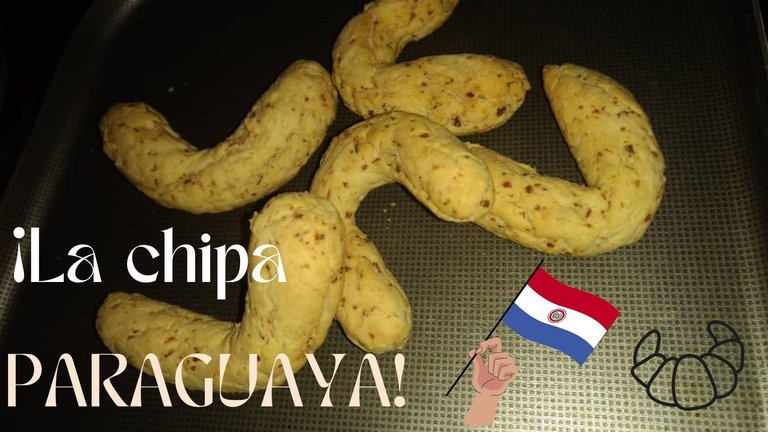
🎉HAPPY NEW YEAR 2025!🎆
What better way to start the year, than sharing a delicious, simple and rich food from a country that is very little known for its gastronomy, but has been winning the palate of other territories.
The holidays are a time of sharing and wherever we are, food is always one of the protagonists. As I always tell you, in my case I am not much of a typical Christmas food, that is, I can share the traditional food dish, but only once and that's it, I don't have to live with repeating the dish over and over again, that bores me!
On the other hand, so much pork, sauces, flours, is not good for the kilos that we barely managed to lose in previous months or that will be difficult to lose in the coming months.
For my part, I like to try options, especially in these days when we have to detox from so many fats and abuses of the holidays. Besides, this recipe is traditional from the country of Paraguay, but regions like Chile and Argentina, have been adding to their meals, preserving the original recipe or adding their own taste.
Searching a little on the internet, I saw that there were different ways to prepare them, but this was the one I got and I share with you, because it was with the ingredients I had in my fridge. I feel that I have eaten or tasted this recipe elsewhere in my country because they are similar to some cheese breads, but if the internet says that it is from that country I honor them without refuting; I do not know if it has a translation, but this is how they are prepared:
Paraguayan chipas
¡Hola mi querida comunidad de #foodielovers! ¡FELIZ AÑO 2025! Qué mejor manera de empezar el año, que compartiendo una deliciosa, sencilla y rica comida de un país que es muy poco conocido por su gastronomía, pero que ha venido ganando el paladar de otros territorios. Las fiestas son una época de compartir y estemos donde estemos, siempre la comida es uno de los protagonistas. Como siempre les digo, en mi caso no soy mucho de la comida típica navideña, es decir, puedo compartir el plato de comida tradicional, pero una sola vez y ya, no tengo que vivir con una y otra vez repitiendo el plato ¡Eso me aburre! Por otro lado, tanto cochino, salsas, harinas, no es buena para los kilitos que a duras penas logramos bajar en meses previos o que se nos hará difícil perder en los meses venideros.
Por mi parte, me gusta probar opciones y sobre todo, en estos días que tenemos que desintoxicarnos de tantas grasas y abusos de las fiestas. Además, esta receta es tradicional del país de Paraguay, pero que regiones como Chile y Argentina, han ido añadiendo a sus comidas, conservando la receta original o añadiendo su propio gusto. Buscando un poco por internet, vi que existían diferentes formas de prepararlas, pero esta fue la que conseguí y les comparto, porque era con los ingredientes que tenía en mi nevera. Siento que esta receta la he comido o probado en cualquier otro lado en mi país porque son parecidos a unos panes de queso, pero si en internet dicen que es de ese país les hago honor sin refutar; no sé si tenga traducción, pero así se preparan: Las chipas paraguayas.
Ingredientes:
🥐 1 taza de Harina de trigo.
🥐 Una cucharadita de polvo de hornear.
🥐 Media taza de azúcar.
🥐 1 huevo.
🥐 1 cucharada de mantequilla.
🥐 Leche líquida. Sirve para hacer homogénea la mezcla.
🥐 queso blanco rallado. Al gusto. En mi caso usé 250 g.
Ingredients:
🥐 1 cup wheat flour.
🥐 1 teaspoon of baking powder.
🥐 Half a cup of sugar.
🥐 1 egg.
🥐 1 tablespoon butter.
🥐 Liquid milk. It serves to make the mixture homogeneous.
🥐 grated white cheese. To taste. In my case I used 250 g.

The preparation is in two simple steps. The first is to mix the “dry”: cheese, flour and sugar. On the other side, “the liquid”, that is, melt the butter and mix it with the milk and the egg.
The rest is to join the separate parts “the dry” with “the liquids”. This step is done with the hands until a compact mixture is created. The dough can be spread on the table to make it manageable.
La preparación es en dos sencillos pasos. El primero es mezclar lo "seco": el queso, la harina y el azúcar. Por el otro lado, "el líquido", es decir, derretir la mantequilla y unirla con la leche y el huevo. Lo demás, es unir las partes separadas "lo seco" con "los líquidos". Este paso lo hacemos con las manos hasta crear una mezcla compacta. La masa la podemos extender en la mesa para que quede manejable.
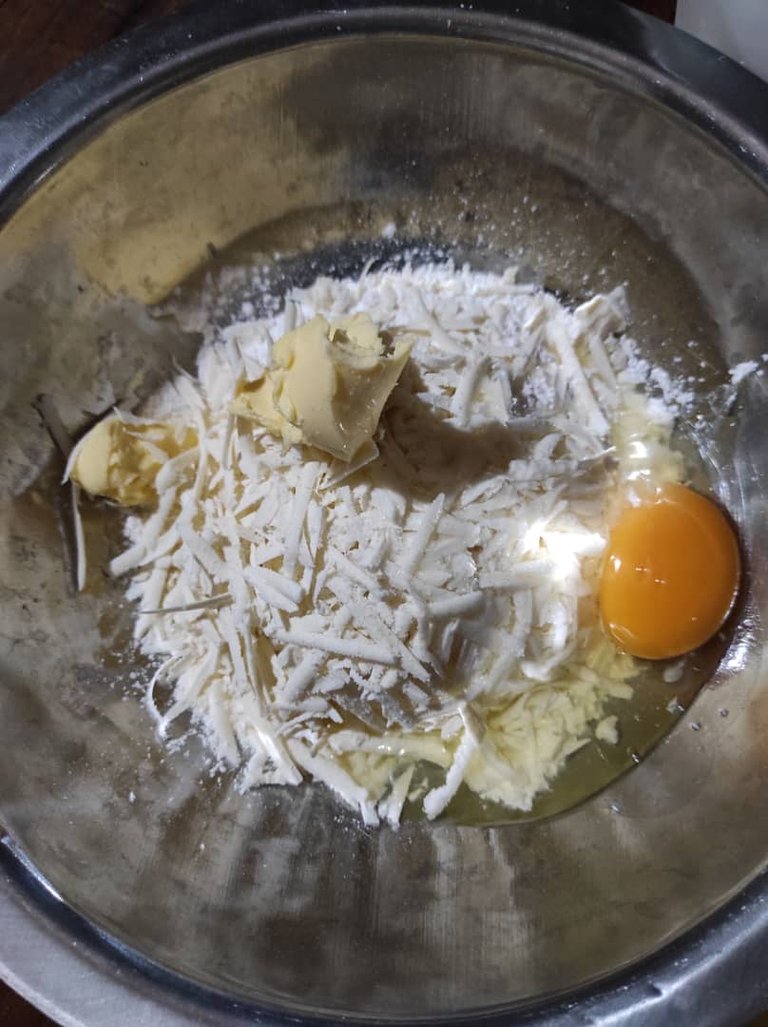
Then, what we do is to form these rings like the ones in the photo and put them in the oven until they are ready. In my fryer it is 25 minutes with a fire at 300º Celsius. It will depend on the heat of your oven. They can also be fried, however, as we are getting out of those foods that hurt us, then we are gradually eliminating “those excesses”.
Luego, lo que hacemos es formar estos aros como los de la foto y ponerlos al horno hasta que estén listas ¿Tiempo? En mi freidora son 25 minutos con fuego a 300º Celsius. Va a depender del fuego de su horno. También pueden freírse, sin embargo, como estamos saliendo de esos alimentos que nos hacen daño, entonces vamos eliminando paulatinamente "esos excesos".

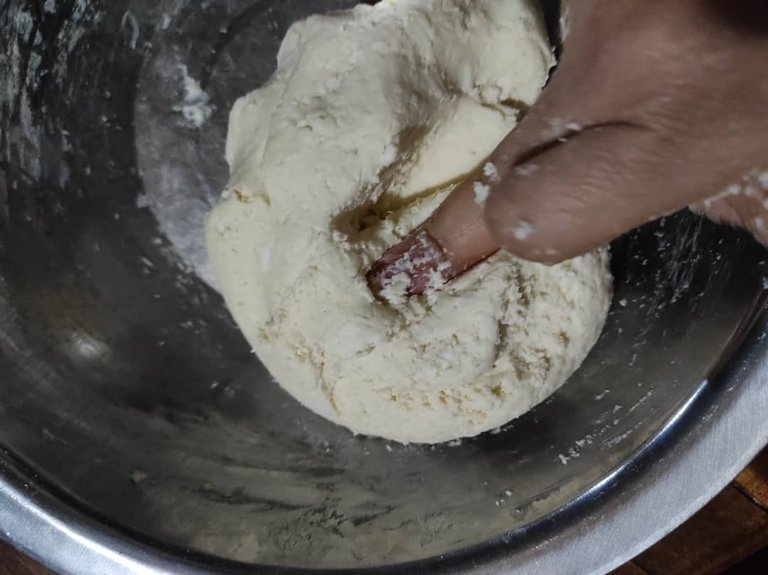
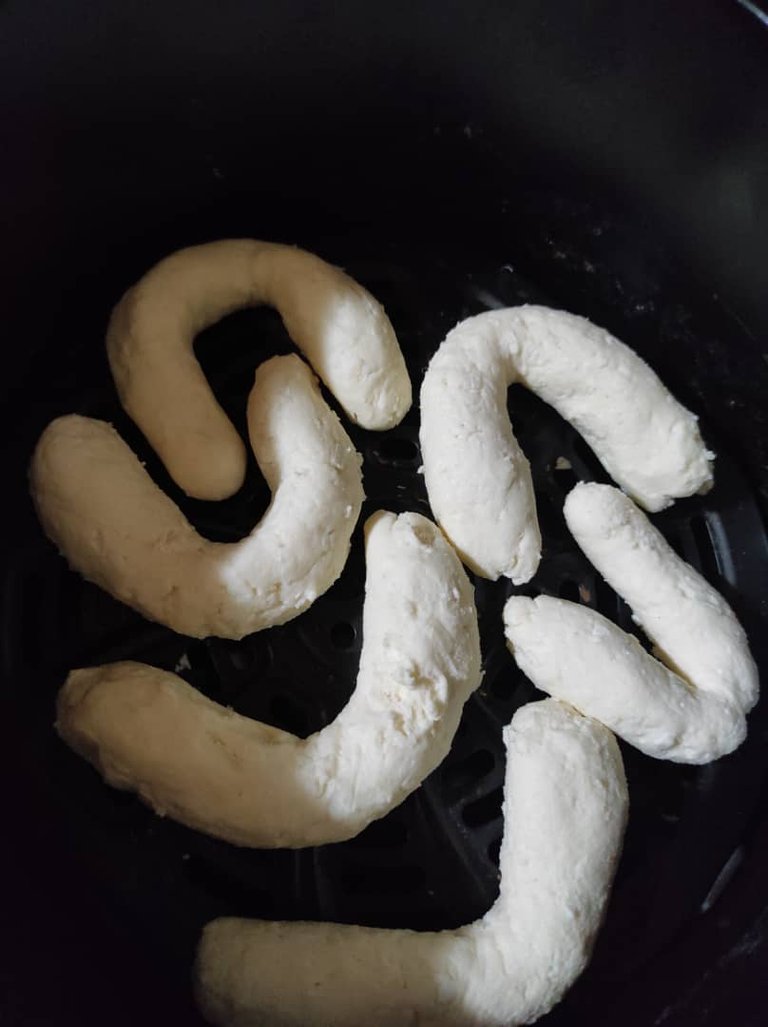
And that's it! This is how these snacks turned out to change the taste we have from the saturation of so many casseroles these days. I thought they were quick, economical and enough for everyone in the family; that night we didn't even have dinner, the portions were enough.
Y ¡Listo! Así quedaron estas meriendas para cambiar el sabor que tenemos de la saturación de tantos guisos de estos días. A mí me pareció que fueron rápidas, económicas y alcanzó para todos en la familia; esa noche ni cenamos, las porciones fueron suficientes.
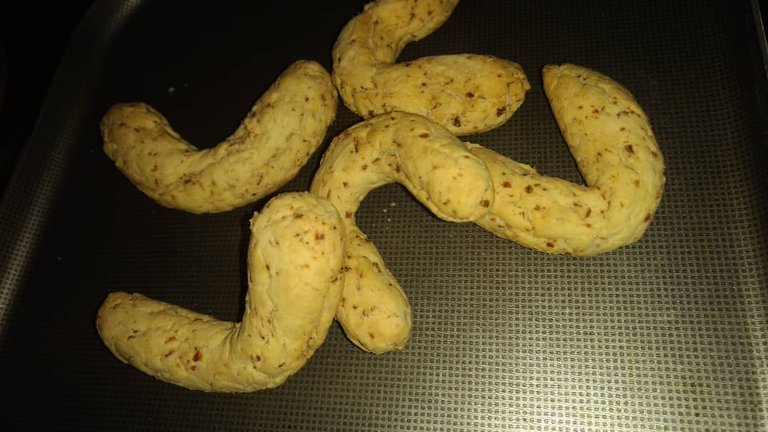
To conclude, I tell you that if you look for the recipes on the internet the cassava starch appears, but I did it with the flour and the result I assume was similar. If you know where that ingredient is available in Venezuela, let😊 me know.
Para culminar, les comento que si buscan las recetas por internet aparece el almidón de mandioca, pero yo lo hice con la harina y el resultado asumo que fue similar. Si saben donde se consigue ese ingrediente en Venezuela, me avisan😊.

I made the cover and the separator in Canvas.
The translator I used was DeepL.
Until a next culinary 😊 meeting.
Las fotografías son de mi propiedad. La portada y el separador los hice en Canvas. El traductor que usé fue DeepL. Hasta un próximo encuentro culinario 😊.

Si amiga, parecen pancitos de queso, pero se hacen con harina de yuca y el queso es amarillo del tipo gouda o pategrás.
Acá en Argentina se consiguen en todos lados y la verdad para mi han sido una perdición, porque son deliciosas y no te conformas con solo una.
¡Que bueno!, gracias por el dato. La harina de yuca es popular y tengo queso je,je,je... A mí me encantaron, así que entiendo tu "perdición" 😎. Gracias por el comentario y tu visita a mi blog 😉.
Que rico te quedó, feliz añoo
¡Feliz año también para ti! Gracias por tu visita 😉.